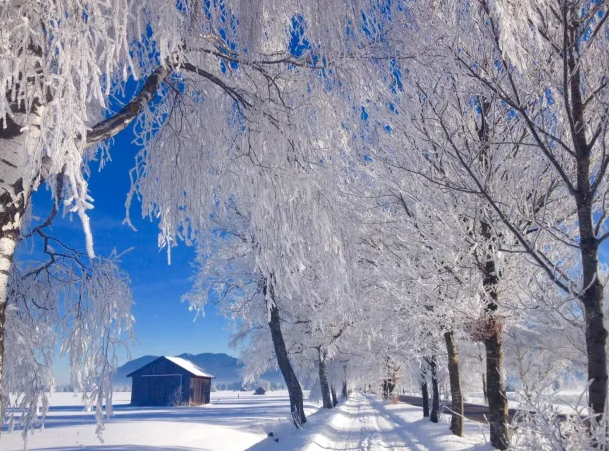Hoar Frost
Hoar frost is one of nature's most enchanting phenomena,
turning ordinary landscapes into shimmering works of art. Its delicate, icy
crystals form intricate patterns that captivate the eye and evoke a sense of
winter wonder. But what exactly is hoar frost, and how does it occur?
What is Hoar Frost?
Hoar frost is a type of frost that forms when water vapor in
the air sublimates directly into ice, skipping the liquid phase entirely. This
occurs under specific conditions: clear skies, calm winds, and very cold
temperatures. These factors allow surfaces, such as blades of grass, tree
branches, or fences, to cool rapidly, encouraging the deposition of ice
crystals.
The term "hoar" originates from an Old English
word meaning "old" or "gray-haired," referencing the
frosty, aged appearance it gives to the environment.
How Does Hoar Frost Form?
The formation of hoar frost depends on a delicate interplay
of temperature and humidity:
Clear Nights: Radiational cooling causes surfaces to lose
heat rapidly to the atmosphere. This cooling effect is most pronounced under
clear skies.
Calm Winds: Gentle or no wind allows the cold air to settle
near the ground, creating a stable environment for frost formation.
Moist Air: Water vapor in the air condenses directly into
ice on cold surfaces. This process is called sublimation and requires the
surface temperature to be below freezing.
Types of Hoar Frost
Hoar frost can take on various forms depending on the
environmental conditions:
Surface Hoar: Forms on ground surfaces, such as snow or
grass, creating a glittering carpet of ice crystals.
Air Hoar: Develops on objects suspended in the air, like
tree branches, wires, or fences.
Rime Frost: Although often confused with hoar frost, rime is
denser and forms under windy and supercooled conditions, resulting in a harder,
less intricate deposit.
Hoar Frost vs. Other Types of Frost
Hoar frost differs from other frosts in its formation and
appearance. For instance, black frost refers to a frost-freezing phenomenon
that leaves no visible ice, and window frost forms when moisture condenses on
glass surfaces in cold conditions. Hoar frost, however, is unique for its
feathery and crystalline structures, often forming elaborate designs that
resemble fern leaves or snowflakes.
The Beauty and Challenges of Hoar Frost
The beauty of hoar frost lies in its fleeting nature and
intricate details. Photographers and nature enthusiasts often wake early on
cold mornings to capture its mesmerizing patterns. However, hoar frost can also
pose challenges, especially in aviation, where frost formation on aircraft
surfaces can compromise safety and performance.
Conclusion
Hoar frost is a stunning reminder of the natural world's
ability to create beauty in the most unexpected places. Its fragile, transient
presence transforms the mundane into the magical, offering a moment of serenity
and wonder in the chill of winter. So next time you step outside on a frosty
morning, take a closer look—you may just find yourself spellbound by nature's
icy artistry.

Comments
Post a Comment